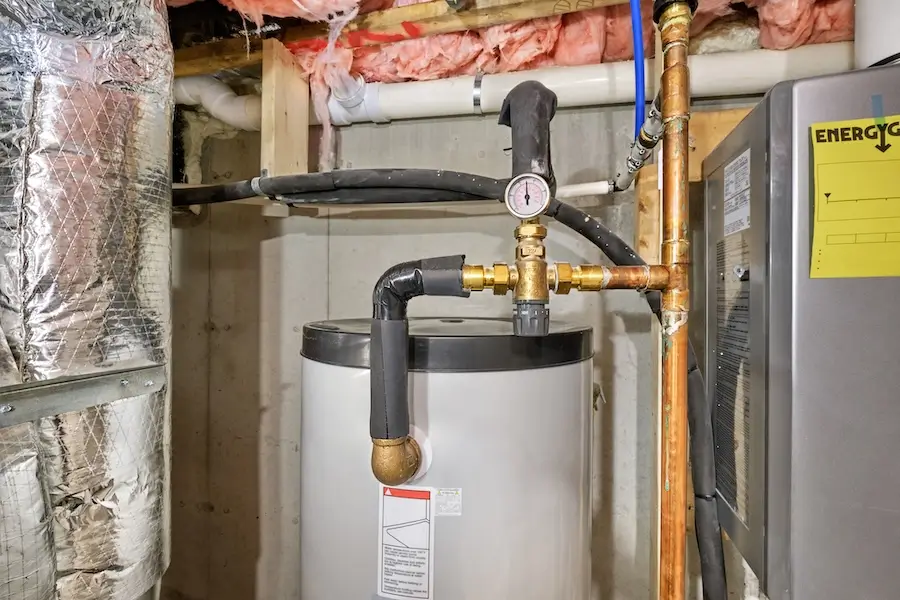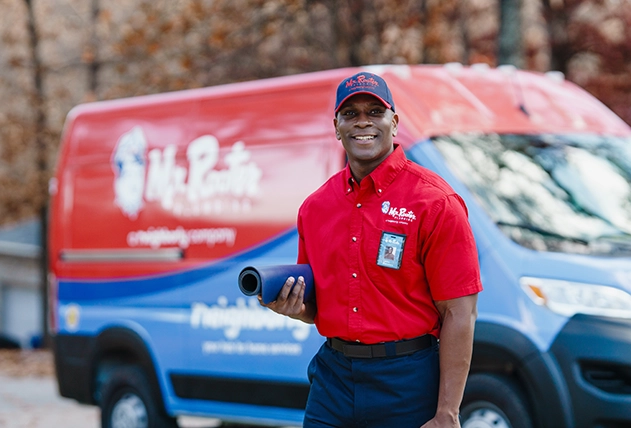
A thermostatic mixing valve, also known as a water heater mixing valve, is a crucial plumbing component installed in homes and businesses to prevent scalding. It’s standard in all new constructions and required in most renovated properties. If your property doesn’t have one, you can ask a trusted plumber to retrofit them. In most cases, they are attached to water heaters and installed near showers, wash basins, and commercial emergency eyewash stations.
Thermostatic mixing valves blend hot and cold water to ensure a comfortable and safe water temperature from plumbing fixtures. They are particularly crucial in properties with vulnerable people, such as babies, children, and older adults.
If you have a hot water mixing valve installed, but you’re unsure how to adjust it to the most appropriate temperature, you can find the information you need in this helpful guide. For further details or to install a new temp mixing valve, contact a licensed and insured plumbing professional.
What Temperature Should Your Hot Water Be?
Before learning how to adjust your thermostatic mixing valve, it’s important to know what your water temperature should be for safety and comfort. The EPA recommends that most households set their water heater to 120°F, which is the ideal temperature for energy efficiency, to prevent disease, and reduce the risk of scalding.
Tip: Unsure what your water temperature is? Look at the dial on your water heater or take a temperature reading from your faucet. Let it run for a few minutes before using your thermometer.
Where to Find the Thermostatic Mixing Valve
Where you’ll find your temp mixing valve can depend on the type of property you have and whether it was installed during its construction or after. Most TMVs are positioned near or on hot water sources, like a water heater, a basin, a faucet, or a shower.
Ask your local plumber, and they will likely tell you that TMVs should be installed as close to the first water outlet as possible.
How to Calibrate a Thermostatic Mixing Valve
If your TMV isn’t set to the correct temperature, you’ll need to adjust it for proper calibration. The exact process can depend on the type of temp mixing valve you have. Refer to the manufacturer’s instructions, or consult your local plumber.
Most TMVs consist of:
- A cold water inlet
- A hot water inlet
- A mixed water outlet
- A thermostatic control mechanism with a temperature sensor to measure the temperature and adjust the water accordingly
You may find that the TMV you purchase already has the water set at the most appropriate temperature, depending on the TMV setting and calibration, as well as local building codes.
If it doesn’t, follow these instructions:
- Remove the cap sticking upward on the TMV
- Find the Allen key opening
- Turn the opening left or right to adjust the temperature by a ⅛ to ¼-turn each time - right for less hot water and left for more hot water
- After adjusting the temperature, measure the temperature of the water leaving your faucet with a thermometer
- Keep adjusting the temperature until it’s the targeted temperature: 100-106°F for showers and 120°F for sinks
- Replace the cap
- If you’re adjusting the water temperature in a commercial setting, you may need to seal the valve with a tamper-resistant cover
How to Know You Need to Adjust Your Temp Mixing Valve
Many of us have a specific water temperature we prefer. If you can relate to any of these signs, you may need to adjust, repair, or replace your thermostatic mixing valve:
- The water temperature is too hot or too cold
- The water temperature is fluctuating, suggesting your mixing valve isn’t regulating the water temperature properly
- The water is taking too long to reach your preferred temperature
- The water flow is weaker than usual
- You notice drips or leaks around the TMV
- There are strange noises coming from the TMV
You can attempt to inspect the hot water mixing valve yourself or outsource this task to trusted plumbing experts.
Contact Mr. Rooter Plumbing® for Help with All Your Plumbing Needs
Whether you need help to calibrate your thermostatic mixing valve, are unsure how to adjust a shower mixing valve, or require a complete bathroom or kitchen remodel, your locally owned and operated Mr. Rooter Plumbing® is here to help. We provide both residential and commercial plumbing services throughout the United States and Canada. Request an online estimate today.

